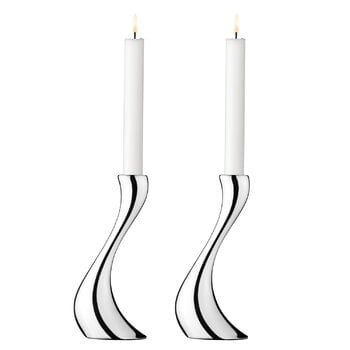Georg Jensen's Cobra candleholders catch the eye with the shine of mirror-polished steel. The organic lines of the candleholders resemble melting wax – almost as if a classic candlestick had started to melt.
Designed by Constantin Wortmann, the Cobra collection is characterized by a swerving, dramatic appearance, and its strong curves create an impression of fast movement. Just like actual cobras, the members of the Cobra collection are imposing, striking and bold. With its mirror-polished steel surface and dynamic design, Cobra is a true design classic that adds a dramatic element to any interior.























